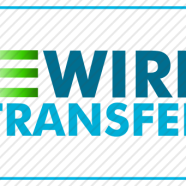Share This
What is a Wire Transfer: A Thorough Overview
In the age of digital finance, wire transfers have become an important part of the global economy. Whether you’re wiring money to a relative abroad or making a business payment to a supplier, wire transfers offer an easy and efficient way to move funds. But like any financial instrument, they come with advantages and disadvantages. Our guide will focus on many things: for example, how to wire money? Wire transfer vs bank transfer: what’s better?
What is a Wire Transfer?
So, what is a wire transfer and how to wire money? How to send a wire transfer? Wire transfer meaning is simple: a wire transfer is an electronic method of moving funds from one person or entity to another. This involves electronically sending money from one bank or financial institution to another, usually via a secure network such as SWIFT (Society for Worldwide Interbank Financial Telecommunication) or Fedwire.
Wire transfers can be used for domestic as well as international transactions and are often favored because of their speed and security.
Pros of Wire Transfers
You already know the wire transfer meaning, so let’s now take a look at the benefits.
- Speed: One key advantage of wire transfers is their quickness. Unlike traditional methods like checks or money orders that may take days to clear, most wire transfers are processed within hours or even minutes – making them perfect for urgent payments.
- Security: Wire transfers are highly secure since they occur over encrypted networks and require authentication from both the sender and recipient, thus greatly minimizing fraud risks while ensuring the safe delivery of funds.
- Global Reach: Seamless international transactions are enabled by wire transfers which allow businesses and individuals to send/receive money across borders without physical exchange of currency being required; this makes them crucial for global trade and commerce.
- Convenience: Initiating a wire transfer has never been easier with online banking on the rise coupled with mobile apps. Majority banks plus financial institutions provide online platforms where users can initiate wire transfers at just a few clicks away thereby doing away with paper forms and physical visits to the bank.
Cons of Wire Transfers
- Cost: Although offering speed together with security measures, there may still be higher fees associated with using wire transfers compared to other payment methods. Banks may charge both sender’s as well receiver’s end during processing phase while additional charges might apply when it comes to international transactions plus currency conversion.
- Lack of transparency: After initiation, tracking can become difficult since the wire transfer does not show the path it follows. Checks or E-payments provide a clear trail of transaction status, but for wire transfers, visibility may be limited, especially where multiple intermediary banks are involved in an international one.
- Potential for errors: Despite having security features, human errors still remain possible within wire transfers. Wrong account numbers or recipient details being entered may lead to funds being sent to the wrong accounts or processing delays taking place.
- Irreversibility: Usually once initiated, it’s hard to reverse a wire transfer. Unlike credit card payments or checks which can be canceled or disputed later on if need be – wire transfers cannot be easily recalled after funds have been sent.
How Does A Wire Transfer Work?
So, how to send a wire transfer and how does a wire transfer work? The process of initiating a wire transfer usually involves several steps:
- Initiation: The sender provides their bank with necessary information such as recipient’s name, account number, bank name and routing number required to initiate this move. They also indicate the amount they want sent and additional instructions like purpose of payment or any reference numbers needed during that time.
- Verification: To ensure that there is enough money for the transaction, the bank of the sender confirms the genuineness of the request. This may mean verifying the identity of the sender as well as carrying out anti-fraud checks to prevent unauthorized transactions.
- Routing: Once payment instructions have been verified, funds are transmitted from one bank (sender’s) to another (recipient’s) through a safe network. If it is an international transfer, it might go through one or more intermediary banks before getting to its final destination point.
Every intermediate bank deducts some fees for processing which could lead to extra costs for either/both parties involved in the transfer. - Processing: On receipt of payment instructions by the recipient’s bank, money gets credited into the recipient’s account. The duration taken for this process varies depending on various factors such as banks used; currency involved in transfer and time zone disparities if any. But generally speaking wires are processed within 1-2 business days although some can be completed within hours.
How Do I Send A Wire Transfer
Follow these steps when wiring money:
- Step 1: Visit Your Bank – Go to your nearest branch or access online banking.
- Step 2: Provide Information – Fill in required details like recipient’s name, account number, bank name and routing number etc; if sending internationally then additional information might be needed e.g., address or SWIFT/BIC code.
- Step 3: Specify Amount & Instructions – Indicate the amount being sent plus other instructions you deem necessary, such as the purpose of payment or any reference numbers.
- Step 4: Review and Confirm – Check the accuracy and completeness of wire transfer details at this point; once satisfied, confirm it.
- Step 5: Pay Fees and Authorize – Pay for applicable charges associated with wire transfers, e.g., processing fees/currency conversion fees, among others, then finally authorize by providing required authentication like PIN/password if need be.
Wire Transfer vs. Bank Transfer
Even as both wire transfers and bank transfers are ways of moving money electronically between accounts, they have some differences:
| Aspect | Description |
| Quickness | Generally speaking, wire transfers tend to be quicker than traditional bank transfers. Funds can sometimes arrive within hours. However, bank transfers may take several business days to process, especially for international transactions. |
| Price | Wire transfers usually entail higher charges compared to bank transfers, especially for international transactions. Sending and receiving banks often levy fees for the transfer, and additional charges may apply for currency conversion or intermediary bank costs. |
| Safety | oth wire transfers and traditional bank transfers are considered secure methods of payment. However, wire transfers are often preferred due to their speed and efficiency. They pass over secure networks and require authentication from both the sender and recipient, minimizing the risk of fraud or unauthorized transactions. |
Are Wire Transfers Safe?
Understandably, people wonder: “Are wire transfers safe?” In general, wires are safe, given that they use secure networks that require authentication from both the sender as well as the receiver. However, like any other financial transaction, wire transfers can be dangerous too, if used wrongly or carelessly.
One should ensure that whoever is receiving money through such means has been verified authentically and all payment details provided are accurate before executing this method. Additionally, sensitive information, e.g., account numbers, passwords, etc., must only be shared over secure channels so as not to give room for unauthorized access.
Top Substitutes
Wire Transfers do not work well under certain circumstances when transferring funds; therefore, there exist various alternatives that have different features plus advantages. Herein below are the five most popular substitutes for this system:
Online Payment Platforms
Such platforms include PayPal and Venmo Square Cash, among others, which allow users to send electronic money quickly and conveniently at low costs compared to regular wires.
They may also offer instant peer-to-peer payments besides same-day ACH capabilities while linking securely with users’ credit/debit cards or bank accounts.
Mobile Payment Apps
Apps like Google Pay, Apple Pay, and Samsung Pay make it possible for people to make payments by using their smartphones.
These applications employ Near Field Communication (NFC) technology to transmit payment information securely between devices.
Mobile payments are good when dealing with face-to-face transactions, and they can be used during online purchases or even peer-to-peer transfers.
Cryptocurrency Transfers
Bitcoin, Ethereum, Ripple, etc., provide an alternative way of sending funds internationally apart from traditional wires.
This is because such transfers are decentralized, so they skip banks, thereby enabling direct dealings between users. Speed and cost efficiency characterize most crypto transactions, although volatility and security issues still surround them.
ACH Transfers
Automated Clearing House (ACH) transfers refer to electronic bank-to-bank moves commonly used for domestic payments within US borders.
Usually slower than wires, taking 1-3 business days to process a transaction from its inception till completion, but often cheaper too due to lower fees charged, especially on non-priority payments where speed is not crucial.
Money Transfer Services
Western Union, MoneyGram Transfer, Wise, Profee etc., offer cheaper, quicker ways of sending money domestically or internationally vis-à-vis regular wire services provided by banks alone.
They also have better exchange rates and faster transfer times compared to banks while allowing flexibility through online mobile app-based options as well as physical agent locations.
Wrapping Up
To conclude, this prompt is about different ways to transfer money other than using wire. Each has its own advantages and disadvantages. The most important thing when making a decision is considering factors such as how fast it can be done, cost, convenience, and security based on what you need or prefer, among others.
Wires provide quickness of transaction, which cannot be matched by any other payment method worldwide, especially if the recipient lives abroad. Nonetheless, there are drawbacks associated with them, which include higher fees charged per every single transaction made through this service plus limited transparency in terms of tracking down where your money went wrong during transit due to a lack of enough information about the sender’s account details like name and address used together with receiver’s personal identification number (PIN).
Being aware of the upsides and downsides of wires is important when managing finances internationally or doing business globally today.






